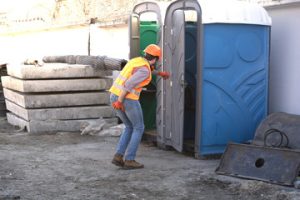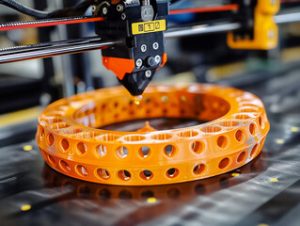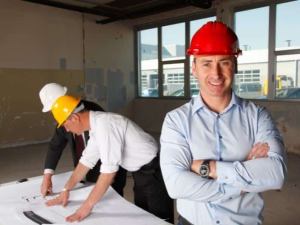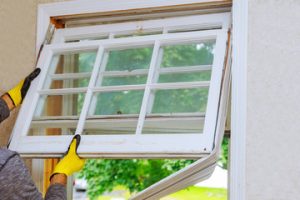A wide variety of events and construction projects require porta potty rental. The type of event and the number of units required significantly impacts the cost. Understanding the factors that affect the costs of these rentals is crucial for budgeting. Contact Reliable Port A Potty for expert guidance.

For example, deluxe portable toilets are more expensive than standard models. These include extra features like sanitizer dispensers and running water. They may also include luxury trailer options, ideal for high-end events.
When planning a wedding, event, or construction project, it’s important to ensure proper onsite sanitation. This is a requirement for both OSHA and local health department regulations, and can prevent serious consequences if not met.
Using portable toilets allows guests or workers to conveniently dispose of their waste in a sanitary manner. In addition, a sufficient number of porta potties can reduce lines and traffic, making the event or project run more smoothly and efficiently. When choosing a rental service, look for one that offers flexible rental durations and services to meet the unique needs of your project or event.
It is also important to consider the environmental impact of a portable restroom. Human feces can carry harmful microorganisms, which can contaminate nearby water sources. By ensuring that your bathroom rentals are placed in a centralized location and properly disposed, you can help protect the environment. Additionally, many portable toilets have hand sanitizer dispensers built in to provide an extra layer of cleanliness and hygiene for users. This is particularly helpful at events where food will be served, as it can reduce the spread of germs and illness. This is why it is critical to choose a rental company that specializes in environmentally friendly sanitation solutions.
Convenience
There is nothing worse than going to an outdoor event and having no access to a bathroom. Porta potties are the solution to this problem, allowing people to use the restroom no matter where they are. This way, guests can enjoy the venue and feel comfortable throughout the day. It is also a great option for construction and other projects that require temporary facilities.
The toilet rental process is simple and requires little to no effort. Simply call a reputable company and tell them how many porta potties you need and when you need them delivered and picked up. The company will deliver the toilets and ensure they are fully stocked before picking them up once you’re finished with them. This allows you to focus on other aspects of your event and make sure everyone is happy.
Another benefit of porta potty rental is that it saves you money. If you have a large event, it can cost a lot to pay for the cleaning and maintenance of your own bathrooms. With porta potties, you can avoid these costs and still have a clean venue. Plus, you’ll save money on water bills because the toilets won’t need to be flushed as frequently as a regular indoor toilet.
You can also find ADA-compliant porta potties that allow you to accommodate guests with disabilities. This is especially important if you have elderly or physically disabled guests, who may be uncomfortable in a small bathroom. By renting portable restrooms, you can provide everyone with the convenience they deserve and make your event more enjoyable for all of your guests.
If you’re planning a tailgate party for friends and family, consider investing in some port-a-potties to keep the drinks flowing. If you don’t have the right bathroom facilities, guests will be forced to leave the party to go to a nearby bathroom, which can ruin the vibe of your event. Plus, you’ll have to wash a lot of towels to clean up after the party. By renting port-a-potties, you can prevent this problem and keep your guests happy all afternoon long.
Safety
One of the most important factors in planning an event is providing restroom facilities for guests. Whether you’re hosting a wedding, an outdoor party, or a construction project, portable toilets provide convenient and hygienic comfort solutions for your guests. They’re also a cost-effective alternative to building or installing permanent restrooms, making them a great option for budget-conscious events.
Porta potties are available in different sizes and styles, including ADA-compliant options. They can be placed throughout your venue to ensure that all attendees have access to a bathroom. Additionally, some rental services offer sanitizer dispensers and touch-free features to promote hygiene and prevent the spread of germs. This is especially beneficial for events that take place at historic or luxury venues, where preserving the integrity of indoor spaces is a priority.
Another benefit of renting portable toilets is that they’re easy to transport and set up. If you’re using them for a long event, consider getting multiple units to meet the needs of your guests. Make sure that you have enough space for each unit, and ask your rental company for placement recommendations. You may want to avoid putting units in locations that are too windy or shaded, as these conditions can affect the function and cleanliness of your porta potties.
Most people use the bathroom 6-7 times in 24 hours, so it’s important to have plenty of toilets at your event. The best way to ensure that everyone has the facilities they need is by hiring a portable restroom rental service near Manhattan. A reputable rental service will provide quality units that are well-maintained and clean for the duration of your event. Moreover, they’ll be happy to answer any questions you have and provide you with reliable customer service.
Besides being easy to transport, porta potties are a cost-effective solution for any kind of event. They’re often used at weddings, concerts, and festivals. They’re also a great solution for construction projects and disaster relief efforts. Portable toilets have a holding tank, which is a sealed, watertight container that holds waste material until it can be disposed of in a sanitary manner.
Cost
Renting porta potties is an affordable way to meet restroom needs at construction sites, events, and other work or public places. They are designed to manage peak demand and are a cost-effective alternative to building permanent facilities at an event site or construction jobsite. The price of a portable toilet rental is based on the number of units, duration, location, and any maintenance or additional services you may need. Some rental companies offer bulk discounts for multiple units and regular cleaning services, making them a good choice for large events.
Whether you are hosting an outdoor wedding or party, or if your backyard is a gathering place for friends and family, portable bathrooms are essential necessities. Not only will they help your guests stay comfortable, but they will also ensure that nobody has to leave the party to use the bathroom. If you are not sure how many portable toilets to rent, consider these tips:
The type of event or construction site significantly impacts the rental costs. Generally, long-term rentals offer lower daily rates than one-time rental. This is because the service provider can schedule routine servicing, which reduces the cost of maintenance. Moreover, the service provider can offer extra amenities and features to enhance user experience.
If you are planning a wedding or special event, you should rent enough port-o-potties to accommodate all your guests. The rule of thumb is to have at least four units for every 100 people attending the event. However, it is best to overestimate this number, as an insufficient amount of toilets can make the event less enjoyable for everyone.
Moreover, you should rent an ADA-compliant portable toilet for events with disabled or elderly guests. These units feature flushing toilets, a hand washing station with running water and antibacterial soap, and other add-ons that will enhance user comfort. Besides ensuring the comfort of your disabled or elderly guests, ADA-compliant portable toilets will also help you comply with local sanitation regulations.
Renting port-o-potties is a smart decision for any outdoor event, construction site, or even your own backyard. They are easy to set up, affordable to rent, and provide all the necessary sanitation facilities for your guests.





